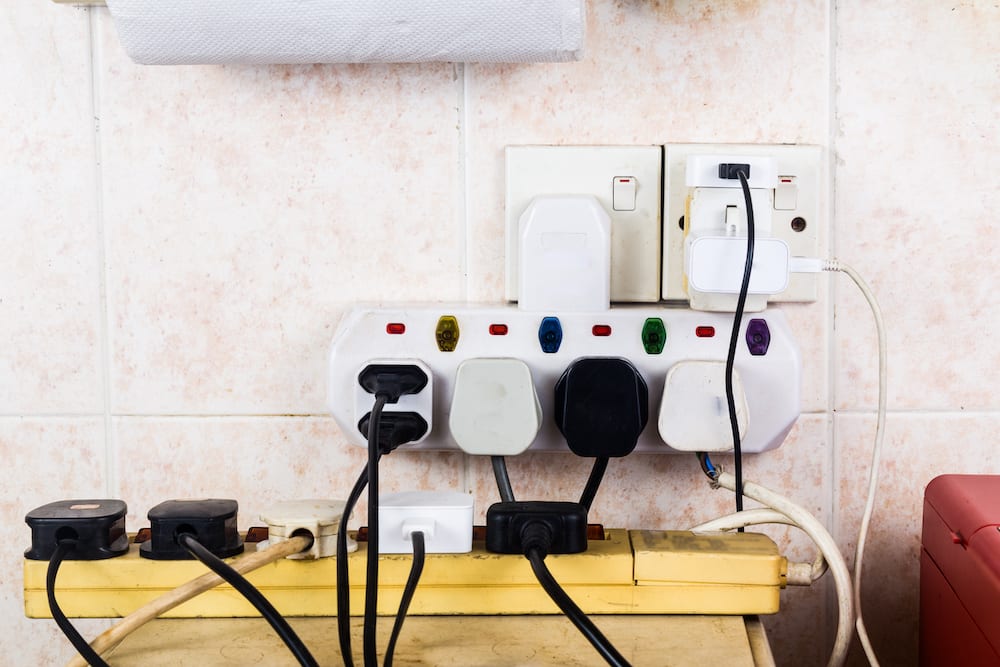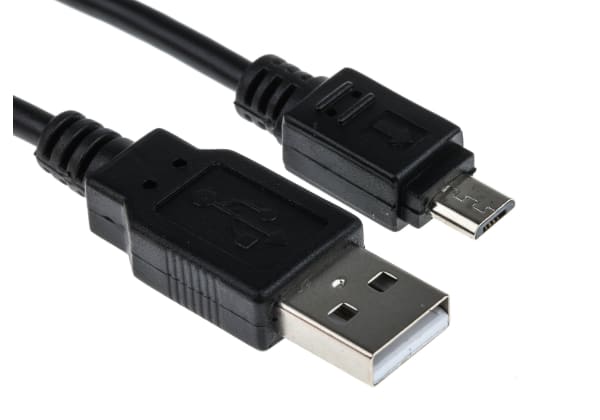- Published 29 Oct 2024
- Last Modified 29 Oct 2024
- 7 min
TV Cable Management Guide
TVs and AV equipment can create tangled jumbles of cables that are not great to look at and a potential safety hazard. This guide explains how to hide unsightly TV cables and AV cables in a way that also reduces potential safety issues.

Reviewed by Peter Kendall, Technical Support Engineer (October 2024)
Do you need some help with your TV cable management or AV cable management? Let’s face it, even the most organised of us sometimes have an unsightly jumble of cables underneath our TV, computer monitor, games console, or speakers.
Help is at hand. This guide asks just what is cable management? It also explains how to do cable management and provides some neat cable tidy ideas.
Let’s get started.
Why is Cable Management Important?
What is cable management? Cable management helps create a pleasant environment that looks good and is easy and safe to work or relax in. Big piles of loose or tangled cables are not only a bit of an eyesore, they potentially impinge on functionality or even represent a danger (such as a trip hazard). Not only that, but untangling loads of wires is a job no one enjoys. With all that in mind, it’s clear why TV cable management and management of cables for other AV and computer equipment is desirable.

How To Do Cable Management
Want to know how to do cable management? There are some basic principles that come in handy:
- Plan where your devices will be. For efficient cable management, there are some places that are better than others for your TV/AV or computer equipment. Plan the devices, and you can also plan the layout of AV cables.
- You’ll likely have a number of pieces of equipment in proximity that have cables performing similar functions, so group these cables together. Put the power cables together, the video cables together, and the audio cables together. This makes it easier to identify the function of each cable.
- Use cable sleeves or other cable tidies for hiding TV cables. Cable sleeves come in a range of colours and lengths, or can be cut to fit the cable in question. They are a straightforward way of grouping cables and keeping them tidy. They are also really good for protecting your pets, who may be tempted to chew cables.
- Your home office or workstation can be improved by running cables behind your desk instead of along the floor. This will stop them getting tangled up together. Cable clips or mounts are used to fix cables in place behind the workstation. .
- Consider using cable boxes to manage cables. In commercial settings, floor boxes (see below) allow easy access to power and data and give installers and electricians easy access to cables and equipment.
TV Cables
We’ve all been there. You have a lovely big flat screen TV and other techie goodies close at hand, but the cables and wires under and around them are in a chaotic state, which spoils the aesthetics of your living room.
Fortunately, tidying up your TV area doesn’t have to be too much of a chore. One of the easiest ways to manage the situation is to pick up some Velcro cable ties from a hardware store. Cable ties can then be used to run cables along the boundaries of your TV furniture and walls.
We’ve already discussed why it’s practical to run cables with a similar function together, and this principle applies to TV cables too. Running power cables and AV cables separately helps prevent interference and makes it easy to identify which type of cable is where.
If you’re wondering about how to hide wires on a wall, you might consider a cable concealer or cable raceway. If your TV is wall-mounted, the raceway – a flat PVC cover – can be glued to the wall and cables can be bundled together within it. If you are setting up a TV to rest on a piece of furniture on the other hand, you can choose a console or cabinet featuring a hole at the rear to push cords through. You can also cover up other AV equipment or communications gear (such as your router) by placing it and the associated cabling behind the cabinet doors.
Whether you’re looking for wall-mounted TV cable management or behind tv cable management, there are lots of options. Remember that it’s also possible to conceal TV cables altogether within the wall if you really want cables to be completely out of sight and mind – and are prepared to do some DIY.
AV Cables
Cable raceways can also be used to manage AV cables for games consoles and the like, in your home office (for desk cable management and under desk cable management), and at work. As well as organising cables, this helps protect them and reduce wear and tear.
Cable storage boxes are also growing in popularity for managing lots of cables as more people work from home and have audiovisual computer equipment such as monitors, second screens, and speaker systems to deal with. And if you’re wondering, a discreet cable storage box could be a good option for your Mac, iPad, and other Apple devices and wires.
Cable Management Accessories
When it comes to how to hide wires and how to hide cables, there are numerous other types of cable management accessory, many of which are stocked by RS. Let’s take a look at some of the options.
Cable Trunking
What is cable trunking? Cable trunking organises and protects electrical cables or wires in industry and the built environment. Cable trunking is made from a range of materials including PVC, uPVC, rubber, and metal, and fits multiple electrical cable types and sizes. Not only does this improve safety, it has aesthetic benefits.
Cable trunking usually consists of a rectangular or square-shaped enclosure with a removable or hinged cover, which allows ease of access to cables when needed. If you want to know how to install cable trunking contact our expert and we can talk you through the wide range of cable trunking we offer.
Cable Covers
You could also try introducing cable covers, which help organise cables and prevent trip hazards. RS cable covers come in a range of lengths and sizes, are made from rubber or plastic, and feature channels or grooves to place the cables in. Cable covers are used on commercial premises and in conference rooms, at trade shows, and in the entertainment industry where they help to minimise the risk of tripping over cables and wires.
Cable Boxes
As well as the aforementioned applications in the home, heavy-duty cable floor boxes and accessories are used on commercial premises to contain buried and underfloor cables and electrical equipment. A floor box provides an accessible option where there is a raised floor, allowing engineers and employees to access power supplies and data cables easily and safely.
Cable Panels
There are also cable management panels available to help manage cables and wires. Cable management panels provide an organised system for fixing cables that comes in handy for maintenance. Cable management panels typically feature a series of rings attached to a panel and include mounting screws and washers so the panel can be fixed to a wall.
Cable Management Checklist
To sum up, cable management is a great way of both achieving aesthetically pleasing interiors at home but also of keeping your home (or commercial premises or office) safe. Just keep the following points in mind for how to use cable tidy solutions:
- Jumbles of cables and wires are tiresome to untangle and don’t look great, but may also represent a trip hazard or present an opportunity for electrical interference. Fortunately, there are lots of great cable tidy ideas out there. Contact RS to see how we can help.
- For good cable management, it helps to start by planning where your devices should be, and the optimal routes for all the associated cables and wires.
- Cable boxes, cable sleeves, and cable raceways are some of the ways of managing cables in the home. Floor boxes are also a good option for managing power cables in commercial premises if there is a raised floor.
- Cable trunking provides a versatile, heavy-duty way of protecting electrical cables or wires in industry, and improves safety.
- For TV cable management, great results can be achieved using something as simple as inexpensive Velcro cable ties.
There are so many electronic devices in the home and office today, and while your cables may be a nightmare, sorting them out doesn’t have to be. There’s a plethora of cable management ideas on the market, so you’re sure to find a solution that works for you.
Did you know RS carries a wide range of cables and wires for many applications? Explore our range.


